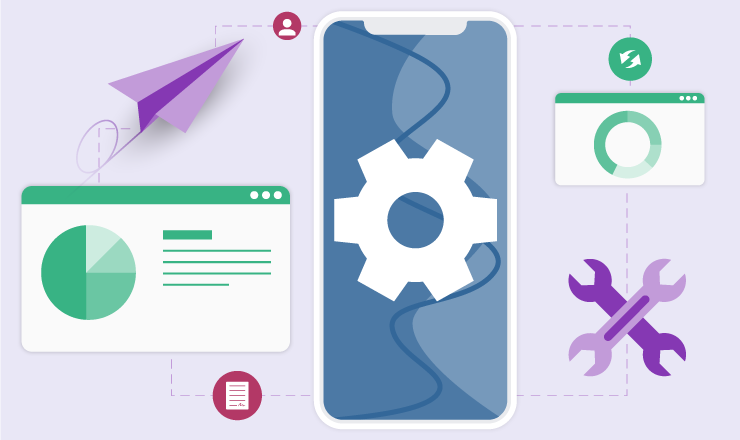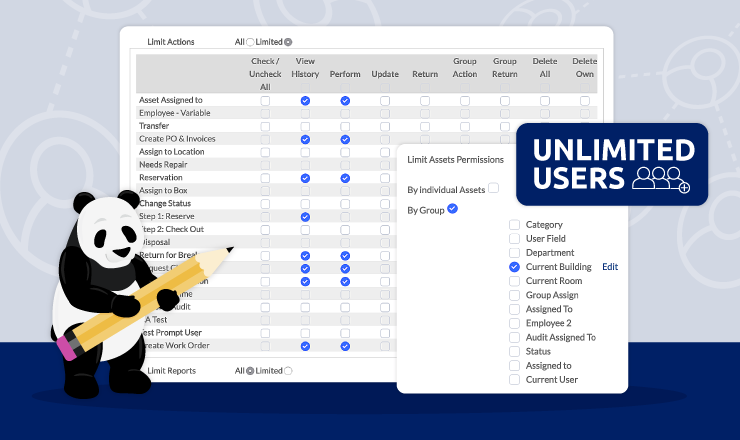The Importance of Reporting in Asset Management

Streamlining your asset management workflows is key to improving your team’s efficiency. When you can accurately track your items’ locations, check them out to employees, and even submit tickets for repair in one centralized place, you save a ton of time and manual effort. However, optimizing these workflows is only half the battle. To truly gain visibility into the full lifecycle of your items and make informed business decisions, you need real-time asset reports and analytics.
Let’s look at the benefits of reporting in asset management, as well as the various report types you can create in Asset Panda.
The Benefits of Reporting and Analytics
We all know reporting and analytics are essential to understanding exactly how a campaign or business is performing. Your assets play an important role in your organization, so let’s discuss the top 3 benefits of reporting in asset management.
- Accountability: Having a pulse on your asset estate data allows you to increase transparency and accountability across your team. With the right software for your asset management use cases, you can understand who currently has or last had an item, what condition it’s in, and where it’s located. This means you can see who’s taken which actions over the course of an asset’s lifespan and follow up with the correct person if an item has unexpected damage or can’t be located.
- Preventive maintenance: While asset management can help you hold team members accountable, it can also help you proactively anticipate maintenance needs. When you can keep tabs on preventive maintenance instead of waiting to repair things reactively, you can keep your assets in working order (and potentially lengthen their lifespan!) to avoid business disruptions and unforeseen costs.
- Informed decision-making: Proper asset management helps you keep your assets functional and allows you to make data-driven decisions for future purchasing. When you fully understand an asset’s lifecycle, you can better forecast when that item will need to be replaced and secure your budget accordingly.
Types of Asset Panda Reports
Now that you understand the benefits of reporting in asset management, let’s dive into the different asset reports you can create in Asset Panda.
Group Reports
Depending on the size of your asset estate, you likely have various Groups of items within your Asset Panda program (e.g., laptops, furniture, vehicles). To keep track of each Group, you can create a Group Report that pulls all the current data points for those assets. For example, you might create one Group Report to understand the current status of all your laptops and another to track the location of different furniture items. These reports are a great tool to monitor the overall state of a group.
Action Reports
While a Group Report keeps you up to date on high-level metrics, you can also create Action Reports in Asset Panda to understand exactly what changes have happened with your items over a selected time period. While you can always view an asset’s action history within its individual asset detail record, Action Reports allow you to see the action history of an entire group in one place.
When creating an action report, you’ll select one action to specifically report on, such as Check Out or Log Maintenance. Then, you can see exactly who performed this action on the items in your selected group and when, helping you increase visibility and accountability across your team.
Change Reports
While Action Reports track any actions performed on your assets, Change Reports note any edits made to the configuration of a group and/or its assets. A change can encompass various things, such as editing the list fields of a group or changing an item’s status or location (without performing an action to do so). Change Reports provide an additional layer of accountability for your organization, as users could be making many changes other than actions.
These reports can also give insight into whether or not users have the correct permissions and are using Asset Panda as intended. For example, are there admin-level users making configuration changes that they shouldn’t be? It could be a good time to make sure the right users have the right permissions. Further, are you noticing people changing the status of an item to ‘Checked Out’ instead of performing a checkout action? This might be a sign that your team needs a training refresher to get on the same page.
Audit Reports
If you perform audits using Asset Panda’s mobile app, you can also pull reports from those audits. When creating this report, you can either pull data from all audits (within a specific timeframe) or select audits. You can create broad asset Audit Reports based on overall findings or narrow them down by specific criteria, such as location or status. While auditing is an excellent tool to keep tabs on your fixed assets and hold your team accountable, Audit Reports are crucial to understanding any discrepancies uncovered during an audit.
Conclusion
Reports are essential to keeping tabs on your asset estate data in real-time. The 4 types of reports above allow you to understand all aspects of your Asset Panda program for increased visibility and accountability. Moreover, you can even automate your Asset Panda reports to be sent to you on specific days and times to minimize manual effort.
If you’re already an Asset Panda customer and have any questions or concerns about reporting, please don’t hesitate to reach out to [email protected] 24/7.
Not yet a customer? Schedule your demo today to see how Asset Panda’s robust reporting and analytics can help you track the full lifecycle of your assets.
Related News & Press

Learn more from an Asset Panda expert
Get a FREE consultation with an asset tracking expert to find out how you can transform your asset tracking.
Contact our Sales Team at (888) 928-6112


